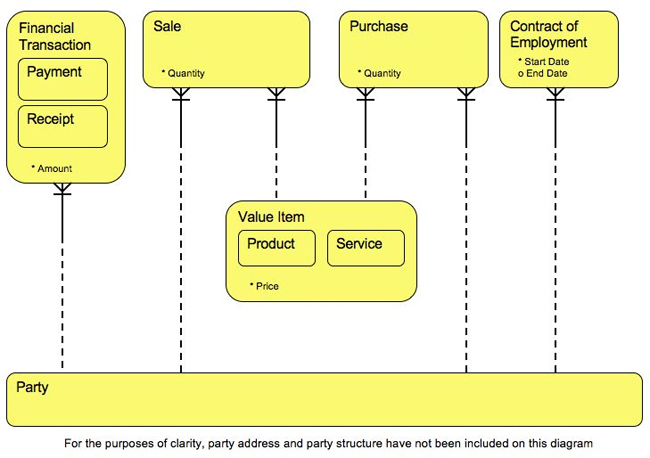Before computerising any Business Functions it is essential to identify and model the data used or created by these Functions and its relationship to other data items (or data entities) within the business.
This is where the Data Structure Model – also referred to as an Entity Relationship Diagram (ERD) or Logical Data Model (LDM) – is an indispensable model.
 It is strongly recommended that you build a Data Structure Model BEFORE you ever design or build a database for any computer system. If you doubt the validity of this statement, ask the question, “Would you consider building a house without an architect’s plan?” and “How would you rate a builder who would attempt to do so? A genius or a fool?”
It is strongly recommended that you build a Data Structure Model BEFORE you ever design or build a database for any computer system. If you doubt the validity of this statement, ask the question, “Would you consider building a house without an architect’s plan?” and “How would you rate a builder who would attempt to do so? A genius or a fool?”
This model is also a a key component of Master Data Management (MDM) and Data Quality.
The stages in Data Structure Modeling within the Integrated Modelling Method (IMM™) are:
 It is strongly recommended that you build a Data Structure Model BEFORE you ever design or build a database for any computer system. If you doubt the validity of this statement, ask the question, “Would you consider building a house without an architect’s plan?” and “How would you rate a builder who would attempt to do so? A genius or a fool?”
It is strongly recommended that you build a Data Structure Model BEFORE you ever design or build a database for any computer system. If you doubt the validity of this statement, ask the question, “Would you consider building a house without an architect’s plan?” and “How would you rate a builder who would attempt to do so? A genius or a fool?”This model is also a a key component of Master Data Management (MDM) and Data Quality.
The stages in Data Structure Modeling within the Integrated Modelling Method (IMM™) are:
- Identify sources of Data Entities or collect information from which these can be identified.
- Analyse all gathered information and sources and extract all “candidate” entities and relationships.
- Convert “Candidates” to true entities and relationships.
- Build the Data Structure or Logical Data Model
- Feed back what has been modelled to the business to ensure that it is correct.
- Liaise with system designers and developers to ensure that the structure of proposed and actual databases truly support the Data Structure Model.
All you will ever need to know about Data Structure Modeling is contained in the Book IMM™ Data Structure Modeling, which is available in digital format from our Online Store.